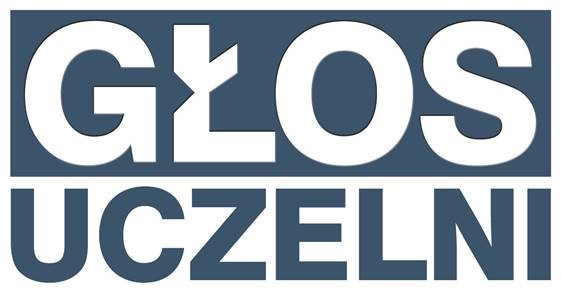
Research papers of the week – January 2024
We present the highest-score research papers of January 2024. These papers have ben published in journals with the highest Ministerial score – 200 points.
Evaluation of sense of safety and privacy in parks in relation to the topography, the presence of dense vegetation and other people in the area
Aleksandra Lis; Karolina Zalewska; Paweł Iwankowski; Katarzyna Betkier; Paulina Bilska; Viktoriia Dudar; Aleksandra Łągiewka
Landscape and Urban Planning
Ministerial score = 200.0
Journal Impact Factor (2023) = 9.1 (Q1)
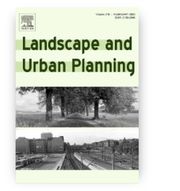 The presence of dense vegetation in a park, its topography and the presence of people are elements of Appleton's prospect-refuge theory and can affect the level of safety and privacy felt by park visitors in various ways. Here we attempt to identify the nature of the relationship between the height of the observation point in relation to the surroundings (flat, higher or lower ground), the location of dense vegetation (near or far away), the presence (or absence) of other people in the vicinity, and the sense of privacy and safety. We analysed the differences in respondents' assessments for 12 experimental scenarios taking into account the variability of the above factors. The method was based on factorial designs. The respondents rated the variables from a set of visualisations that differed systematically in terms of the independent variables. The study involved 150 people who evaluated computer visualisations of park landscape in terms of privacy and safety. We compared the respondents' mean scores for the experimental scenarios by performing three-way analyses of variance for dependent samples. The respondents considered flat or lower ground without the presence of another person in the vicinity to be the safest. In terms of privacy, landscapes higher up, surrounded by dense vegetation and without the presence of other people in the vicinity, were rated the highest. The results yielded some practical conclusions. Privacy without compromising safety will be offered by places located away from people who might attack (safety) or monitor us (privacy). Flat ground seems to be optimal from the point of view of safety and privacy at the same time - this level is the safest, and privacy may be enhanced by nearby dense vegetation.
The presence of dense vegetation in a park, its topography and the presence of people are elements of Appleton's prospect-refuge theory and can affect the level of safety and privacy felt by park visitors in various ways. Here we attempt to identify the nature of the relationship between the height of the observation point in relation to the surroundings (flat, higher or lower ground), the location of dense vegetation (near or far away), the presence (or absence) of other people in the vicinity, and the sense of privacy and safety. We analysed the differences in respondents' assessments for 12 experimental scenarios taking into account the variability of the above factors. The method was based on factorial designs. The respondents rated the variables from a set of visualisations that differed systematically in terms of the independent variables. The study involved 150 people who evaluated computer visualisations of park landscape in terms of privacy and safety. We compared the respondents' mean scores for the experimental scenarios by performing three-way analyses of variance for dependent samples. The respondents considered flat or lower ground without the presence of another person in the vicinity to be the safest. In terms of privacy, landscapes higher up, surrounded by dense vegetation and without the presence of other people in the vicinity, were rated the highest. The results yielded some practical conclusions. Privacy without compromising safety will be offered by places located away from people who might attack (safety) or monitor us (privacy). Flat ground seems to be optimal from the point of view of safety and privacy at the same time - this level is the safest, and privacy may be enhanced by nearby dense vegetation.
DOI:10.1016/j.landurbplan.2023.104948
Fungal Planet description sheets: 1550–1613
P.W. Crous; M.M. Costa; H. Kandemir; M. Vermaas; D. Vu; L. Zhao; E. Arumugam; A. Flakus; Ž. Jurjević; M. Kaliyaperumal; S. Mahadevakumar; R. Murugadoss; R.G. Shivas; Y.P. Tan; M.J. Wingfield; S.E. Abell; T.S. Marney; C. Danteswari; V. Darmostuk; C.M. Denchev; T.T. Denchev; J. Etayo; J. Gené; S. Gunaseelan; V. Hubka; T. Illescas; G.M. Jansen; K. Kezo; S. Kumar; E. Larsson; K.T. Mufeeda; M. Piątek; P. Rodriguez-Flakus; P.V.S.R.N. Sarma; M. Stryjak-Bogacka; D. Torres-Garcia; J. Vauras; D.A. Acal; A. Akulov; K. Alhudaib; M. Asif; S. Balashov; H.-O. Baral; Anna Baturo-Cieśniewska; D. Begerow; A. Beja-Pereira; M.V. Bianchinotti; P. Bilański; S. Chandranayaka; N. Chellappan; D.A. Cowan; F.A. Custódio; P. Czachura; G. Delgado; N.I. De Silva ; J. Dijksterhuis; M. Dueñas; P. Eisvand; V. Fachada; J. Fournier; Y. Fritsche; F. Fuljer; K.G.G. Ganga; M.P. Guerra; K. Hansen; N. Hywel-Jones; A.M. Ismail; C.R. Jacobs; R. Jankowiak; A. Karich; M. Kemler; K. Kisło; W. Klofac; I. Krisai-Greilhuber; K.P.D. Latha; R. Lebeuf; M.E. Lopes; S. Lumyong; J.G. Maciá-Vicente; G. Maggs-Kölling; D. Magistà; P. Manimohan; M.P. Martín; E. Mazur; M. Mehrabi-Koushki; A.N. Miller; A. Mombert; E.A. Ossowska; Katarzyna Patejuk; O.L. Pereira; S. Piskorski; M. Plaza; A.R. Podile; A. Polhorský; Wojciech Pusz; M. Raza; Małgorzata Ruszkiewicz-Michalska; M. Saba; R.M. Sánchez; R. Singh; L. Śliwa; M.E. Smith; V.M. Stefenon; D. Strašiftáková; N. Suwannarach; Katarzyna Szczepańska; M.T. Telleria; D.S. Tennakoon; M. Thines; R.G. Thorn; Jacek Urbaniak; M. van der Vegte ; V. Vasan; C. Vila-Viçosa; H. Voglmayr; M. Wrzosek; J. Zappelini; J.Z. Groenewald
Persoonia
Ministerial score = 200.0
Journal Impact Factor (2023) = 9.1 (Q1)
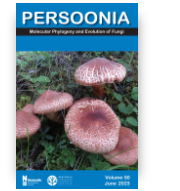 Novel species of fungi described in this study include those from various countries as follows: Argentina, Neocamarosporium halophilum in leaf spots of Atriplex undulata. Australia, Aschersonia merianiae on scale insect (Coccoidea), Curvularia huamulaniae isolated from air, Hevansia mainiae on dead spider, Ophiocordyceps poecilometigena on Poecilometis sp. Bolivia, Lecanora menthoides on sandstone, in open semi-desert montane areas, Sticta monlueckiorum corticolous in a forest, Trichonectria epimegalosporae on apothecia of corticolous Megalospora sulphurata var. sulphurata, Trichonectria puncteliae on the thallus of Punctelia borreri. Brazil, Catenomargarita pseudocercosporicola (incl. Catenomargarita gen. nov.) hyperparasitic on Pseudocercospora fijiensis on leaves of Musa acuminata, Tulasnella restingae on protocorms and roots of Epidendrum fulgens. Bulgaria, Anthracoidea umbrosae on Carex spp. Croatia, Hymenoscyphus radicis from surface-sterilised, asymptomatic roots of Microthlaspi erraticum, Orbilia multiserpentina on wood of decorticated branches of Quercus pubescens. France, Calosporella punctatispora on dead corticated twigs of Acer opalus. French West Indies (Martinique), Eutypella lechatii on dead corticated palm stem. Germany, Arrhenia alcalinophila on loamy soil. Iceland, Cistella blauvikensis on dead grass (Poaceae). India, Fulvifomes maritimus on living Peltophorum pterocarpum, Fulvifomes natarajanii on dead wood of Prosopis juliflora, Fulvifomes subazonatus on trunk of Azadirachta indica, Macrolepiota bharadwajii on moist soil near the forest, Narcissea delicata on decaying elephant dung, Paramyrothecium indicum on living leaves of Hibiscus hispidissimus, Trichoglossum syamviswanathii on moist soil near the base of a bamboo plantation. Iran, Vacuiphoma astragalicola from stem canker of Astragalus sarcocolla. Malaysia, Neoeriomycopsis fissistigmae (incl. Neoeriomycopsidaceae fam. nov.) on leaf spots on flower Fissistigma sp. Namibia, Exophiala lichenicola lichenicolous on Acarospora cf. luederitzensis. Netherlands, Entoloma occultatum on soil, Extremus caricis on dead leaves of Carex sp., Inocybe pseudomytiliodora on loamy soil. Norway, Inocybe guldeniae on calcareous soil, Inocybe rupestroides on gravelly soil. Pakistan, Hymenagaricus brunneodiscus on soil. Philippines, Ophiocordyceps philippinensis parasitic on Asilus sp. Poland, Hawksworthiomyces ciconiae isolated from Ciconia ciconia nest, Plectosphaerella vigrensis from leaf spots on Impatiens noli-tangere, Xenoramularia epitaxicola from sooty mould community on Taxus baccata. Portugal, Inocybe dagamae on clay soil. Saudi Arabia, Diaporthe jazanensis on branches of Coffea arabica. South Africa, Alternaria moraeae on dead leaves of Moraea sp., Bonitomyces buffelskloofinus (incl. Bonitomyces gen. nov.) on dead twigs of unknown tree, Constrictochalara koukolii on living leaves of Itea rhamnoides colonised by a Meliola sp., Cylindromonium lichenophilum on Parmelina tiliacea, Gamszarella buffelskloofina (incl. Gamszarella gen. nov.) on dead insect, Isthmosporiella africana (incl. Isthmosporiella gen. nov.) on dead twigs of unknown tree, Nothoeucasphaeria buffelskloofina (incl. Nothoeucasphaeria gen. nov.), on dead twigs of unknown tree, Nothomicrothyrium beaucarneae (incl. Nothomicrothyrium gen. nov.) on dead leaves of Beaucarnea stricta, Paramycosphaerella proteae on living leaves of Protea caffra, Querciphoma foliicola on leaf litter, Rachicladosporium conostomii on dead twigs of Conostomium natalense var. glabrum, Rhamphoriopsis synnematosa on dead twig of unknown tree, Waltergamsia mpumalanga on dead leaves of unknown tree. Spain, Amanita fulvogrisea on limestone soil, in mixed forest, Amanita herculis in open Quercus forest, Vuilleminia beltraniae on Cistus symphytifolius. Sweden, Pachyella pulchella on decaying wood on sand-silt riverbank. Thailand, Deniquelata cassiae on dead stem of Cassia fistula, Stomiopeltis thailandica on dead twigs of Magnolia champaca. Ukraine, Circinaria podoliana on natural limestone outcrops, Neonematogonum carpinicola (incl. Neonematogonum gen. nov.) on dead branches of Carpinus betulus. USA, Exophiala wilsonii water from cooling tower, Hygrophorus aesculeticola on soil in mixed forest, and Neocelosporium aereum from air in a house attic. Morphological and culture characteristics are supported by DNA barcodes.
Novel species of fungi described in this study include those from various countries as follows: Argentina, Neocamarosporium halophilum in leaf spots of Atriplex undulata. Australia, Aschersonia merianiae on scale insect (Coccoidea), Curvularia huamulaniae isolated from air, Hevansia mainiae on dead spider, Ophiocordyceps poecilometigena on Poecilometis sp. Bolivia, Lecanora menthoides on sandstone, in open semi-desert montane areas, Sticta monlueckiorum corticolous in a forest, Trichonectria epimegalosporae on apothecia of corticolous Megalospora sulphurata var. sulphurata, Trichonectria puncteliae on the thallus of Punctelia borreri. Brazil, Catenomargarita pseudocercosporicola (incl. Catenomargarita gen. nov.) hyperparasitic on Pseudocercospora fijiensis on leaves of Musa acuminata, Tulasnella restingae on protocorms and roots of Epidendrum fulgens. Bulgaria, Anthracoidea umbrosae on Carex spp. Croatia, Hymenoscyphus radicis from surface-sterilised, asymptomatic roots of Microthlaspi erraticum, Orbilia multiserpentina on wood of decorticated branches of Quercus pubescens. France, Calosporella punctatispora on dead corticated twigs of Acer opalus. French West Indies (Martinique), Eutypella lechatii on dead corticated palm stem. Germany, Arrhenia alcalinophila on loamy soil. Iceland, Cistella blauvikensis on dead grass (Poaceae). India, Fulvifomes maritimus on living Peltophorum pterocarpum, Fulvifomes natarajanii on dead wood of Prosopis juliflora, Fulvifomes subazonatus on trunk of Azadirachta indica, Macrolepiota bharadwajii on moist soil near the forest, Narcissea delicata on decaying elephant dung, Paramyrothecium indicum on living leaves of Hibiscus hispidissimus, Trichoglossum syamviswanathii on moist soil near the base of a bamboo plantation. Iran, Vacuiphoma astragalicola from stem canker of Astragalus sarcocolla. Malaysia, Neoeriomycopsis fissistigmae (incl. Neoeriomycopsidaceae fam. nov.) on leaf spots on flower Fissistigma sp. Namibia, Exophiala lichenicola lichenicolous on Acarospora cf. luederitzensis. Netherlands, Entoloma occultatum on soil, Extremus caricis on dead leaves of Carex sp., Inocybe pseudomytiliodora on loamy soil. Norway, Inocybe guldeniae on calcareous soil, Inocybe rupestroides on gravelly soil. Pakistan, Hymenagaricus brunneodiscus on soil. Philippines, Ophiocordyceps philippinensis parasitic on Asilus sp. Poland, Hawksworthiomyces ciconiae isolated from Ciconia ciconia nest, Plectosphaerella vigrensis from leaf spots on Impatiens noli-tangere, Xenoramularia epitaxicola from sooty mould community on Taxus baccata. Portugal, Inocybe dagamae on clay soil. Saudi Arabia, Diaporthe jazanensis on branches of Coffea arabica. South Africa, Alternaria moraeae on dead leaves of Moraea sp., Bonitomyces buffelskloofinus (incl. Bonitomyces gen. nov.) on dead twigs of unknown tree, Constrictochalara koukolii on living leaves of Itea rhamnoides colonised by a Meliola sp., Cylindromonium lichenophilum on Parmelina tiliacea, Gamszarella buffelskloofina (incl. Gamszarella gen. nov.) on dead insect, Isthmosporiella africana (incl. Isthmosporiella gen. nov.) on dead twigs of unknown tree, Nothoeucasphaeria buffelskloofina (incl. Nothoeucasphaeria gen. nov.), on dead twigs of unknown tree, Nothomicrothyrium beaucarneae (incl. Nothomicrothyrium gen. nov.) on dead leaves of Beaucarnea stricta, Paramycosphaerella proteae on living leaves of Protea caffra, Querciphoma foliicola on leaf litter, Rachicladosporium conostomii on dead twigs of Conostomium natalense var. glabrum, Rhamphoriopsis synnematosa on dead twig of unknown tree, Waltergamsia mpumalanga on dead leaves of unknown tree. Spain, Amanita fulvogrisea on limestone soil, in mixed forest, Amanita herculis in open Quercus forest, Vuilleminia beltraniae on Cistus symphytifolius. Sweden, Pachyella pulchella on decaying wood on sand-silt riverbank. Thailand, Deniquelata cassiae on dead stem of Cassia fistula, Stomiopeltis thailandica on dead twigs of Magnolia champaca. Ukraine, Circinaria podoliana on natural limestone outcrops, Neonematogonum carpinicola (incl. Neonematogonum gen. nov.) on dead branches of Carpinus betulus. USA, Exophiala wilsonii water from cooling tower, Hygrophorus aesculeticola on soil in mixed forest, and Neocelosporium aereum from air in a house attic. Morphological and culture characteristics are supported by DNA barcodes.
DOI:10.3767/persoonia.2023.51.08
Long-term ice mass changes in Greenland and Antarctica derived from satellite laser ranging
Filip Gałdyn; Krzysztof Sośnica; Radosław Zajdel; Ulrich Meyer; Adrian Jäggi
Remote Sensing of Environment
Ministerial score = 200.0
Journal Impact Factor (2023) = 13.5 (Q1)
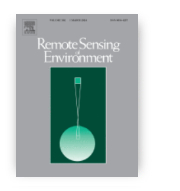 Time-variable gravity field models obtained from satellite gravimetric techniques allow for the assessment of ice sheet mass changes in remote polar regions, such as Greenland and Antarctica. So far, GRACE has been the primary mission for obtaining the global time-variable gravity field models. However, GRACE was launched in 2002, thus very little is known about the global mass changes before this data, as well as between GRACE and its successor – GRACE Follow-On. We derive a method of gravity field recovery based on Satellite Laser Ranging (SLR) data to geodetic satellites that allows for obtaining direct ice mass change estimates for a period longer by 10 years than that provided by the GRACE missions. The developed method is based on splitting normal equation systems and re-stacking the solutions which allow for stable inversion, reduces the correlations between obtained parameters, stabilizes the ice mass estimates in polar regions, and reduces the noise over oceans by a factor of four. The secular trends obtained from SLR are equal to −113.5 and −82.8 Gt/year, whereas these are −119.1 and −83.3 Gt/year from GRACE and GRACE-FO to degree and order 10 for Greenland and West Antarctica, respectively, for the common period of 2002–2021 and after removing the post-glacial rebound effect. Despite the conformity of the trend and patterns, an underestimation is observed in the solutions expanded to degree and order 10. Therefore, scaling factors between GRACE/GRACE-FO expanded up to a degree and order 10 × 10 and 60 × 60 were derived and applied to SLR solutions to account for the differences in mass estimates due to the truncation of the models. SLR data revealed that in Greenland the smallest ice mass trends are for 1995–2000, 2000–2005, and 2015–2020 which are equal to +54.3, −15.5, and −75.9 Gt/year. The largest ice mass depletion periods took place in 2005–2010, 2010–2015, and recently in 2019–2021 with trends of −213.9, −287.2, and −276.1 Gt/year, respectively. For Greenland and West Antarctica, the period 2010–2015 is characterized by the most enormous ice depletion events, whereas the later 5-year period of 2015–2020 provided a near mass-equilibrium for Antarctica reducing the negative trend and returning to the situation from the ‘90s when no significant ice mass changes were observed.
Time-variable gravity field models obtained from satellite gravimetric techniques allow for the assessment of ice sheet mass changes in remote polar regions, such as Greenland and Antarctica. So far, GRACE has been the primary mission for obtaining the global time-variable gravity field models. However, GRACE was launched in 2002, thus very little is known about the global mass changes before this data, as well as between GRACE and its successor – GRACE Follow-On. We derive a method of gravity field recovery based on Satellite Laser Ranging (SLR) data to geodetic satellites that allows for obtaining direct ice mass change estimates for a period longer by 10 years than that provided by the GRACE missions. The developed method is based on splitting normal equation systems and re-stacking the solutions which allow for stable inversion, reduces the correlations between obtained parameters, stabilizes the ice mass estimates in polar regions, and reduces the noise over oceans by a factor of four. The secular trends obtained from SLR are equal to −113.5 and −82.8 Gt/year, whereas these are −119.1 and −83.3 Gt/year from GRACE and GRACE-FO to degree and order 10 for Greenland and West Antarctica, respectively, for the common period of 2002–2021 and after removing the post-glacial rebound effect. Despite the conformity of the trend and patterns, an underestimation is observed in the solutions expanded to degree and order 10. Therefore, scaling factors between GRACE/GRACE-FO expanded up to a degree and order 10 × 10 and 60 × 60 were derived and applied to SLR solutions to account for the differences in mass estimates due to the truncation of the models. SLR data revealed that in Greenland the smallest ice mass trends are for 1995–2000, 2000–2005, and 2015–2020 which are equal to +54.3, −15.5, and −75.9 Gt/year. The largest ice mass depletion periods took place in 2005–2010, 2010–2015, and recently in 2019–2021 with trends of −213.9, −287.2, and −276.1 Gt/year, respectively. For Greenland and West Antarctica, the period 2010–2015 is characterized by the most enormous ice depletion events, whereas the later 5-year period of 2015–2020 provided a near mass-equilibrium for Antarctica reducing the negative trend and returning to the situation from the ‘90s when no significant ice mass changes were observed.
DOI:10.1016/j.rse.2024.113994
Fermented rapeseed meal subjected to a biosorption process: A potential new feed additive with microelements for laying hens
Damian Konkol; Ewa Popiela; Dawid Skrzypczak; Grzegorz Izydorczyk; Katarzyna Mikuła; Aleksandra Gersz; Sebastian Opaliński; Anna Witek-Krowiak; Katarzyna Chojnacka; Anna Krasowska; Marcin Łukasiewicz; Mariusz Korczyński
Animal Feed Science and Technology
Ministerial score = 200.0
Journal Impact Factor (2023) = 3.2 (Q1)
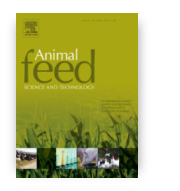 The antinutritional substances contained in rapeseed play an essential role in the bioavailability of microelements contained in feed. This problem can be solved by fermentation of rapeseed products, which can also be enriched with selected microelements through biosorption. Therefore, the aim of this study was to determine the biosorption capacity of fermented rapeseed meal (FRSM) by enriching its biomass with Cu(II), Mn(II), Zn(II), and Fe(II) ions and then using the FRSM prepared in this way in laying hens’ diet and examining its impact on performance, egg quality and transfer of microelements to eggs content. Seventy-two laying hens of the Lohmann Brown line (26 weeks of age) were used in the experiment. The experiment lasted 90 days. The birds were randomly divided into two experimental groups, each group consisted of 12 replications (cages), and each replication of 3 hens (36 birds per group). The first group (BURSM) was the control group and received 30 g/kg unfermented rapeseed meal (URSM) after the biosorption process (enrichment in Cu(II), Mn(II), Zn(II), and Fe(II) ions) in the feed, the second group (BFRSM) received 30 g/kg of fermented rapeseed meal (FRSM) after the biosorption process (enrichment in Cu(II), Mn(II), Zn(II), and Fe(II) ions) in the feed. The results conclude that both URSM and FRSM can be used as a substrate in the biosorption process. However, in the case of laying hens’ performance and egg quality, the form of the rapeseed meal (RSM) was not statistically significant. Hens in the BURSM group were characterized by higher bioaccumulation factor (BF), while hens from the BFRSM group were characterized by higher transfer coefficients (TC), which may be important in the design of functional foods.
The antinutritional substances contained in rapeseed play an essential role in the bioavailability of microelements contained in feed. This problem can be solved by fermentation of rapeseed products, which can also be enriched with selected microelements through biosorption. Therefore, the aim of this study was to determine the biosorption capacity of fermented rapeseed meal (FRSM) by enriching its biomass with Cu(II), Mn(II), Zn(II), and Fe(II) ions and then using the FRSM prepared in this way in laying hens’ diet and examining its impact on performance, egg quality and transfer of microelements to eggs content. Seventy-two laying hens of the Lohmann Brown line (26 weeks of age) were used in the experiment. The experiment lasted 90 days. The birds were randomly divided into two experimental groups, each group consisted of 12 replications (cages), and each replication of 3 hens (36 birds per group). The first group (BURSM) was the control group and received 30 g/kg unfermented rapeseed meal (URSM) after the biosorption process (enrichment in Cu(II), Mn(II), Zn(II), and Fe(II) ions) in the feed, the second group (BFRSM) received 30 g/kg of fermented rapeseed meal (FRSM) after the biosorption process (enrichment in Cu(II), Mn(II), Zn(II), and Fe(II) ions) in the feed. The results conclude that both URSM and FRSM can be used as a substrate in the biosorption process. However, in the case of laying hens’ performance and egg quality, the form of the rapeseed meal (RSM) was not statistically significant. Hens in the BURSM group were characterized by higher bioaccumulation factor (BF), while hens from the BFRSM group were characterized by higher transfer coefficients (TC), which may be important in the design of functional foods.
DOI:10.1016/j.anifeedsci.2023.115855

